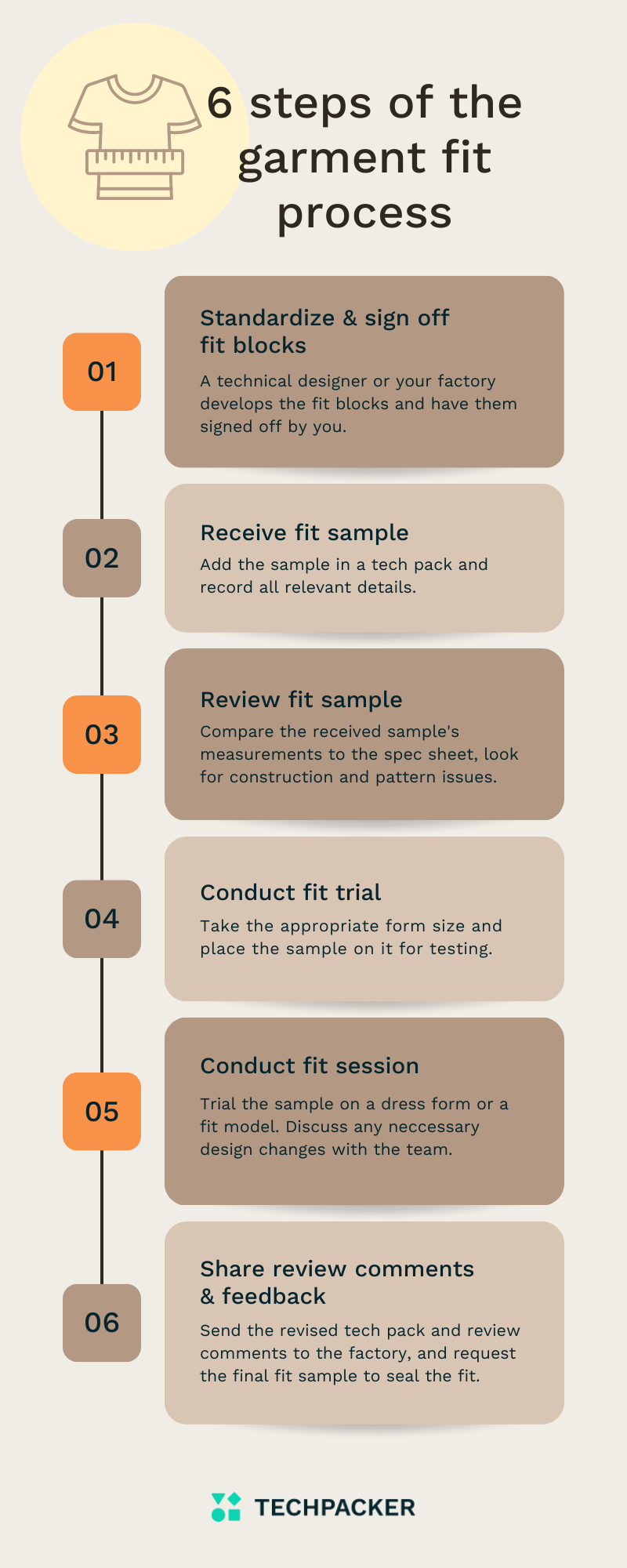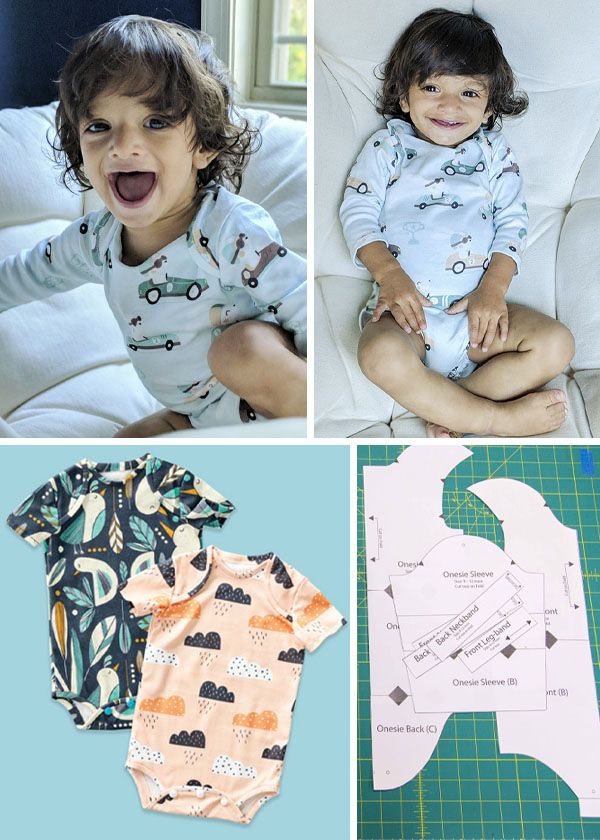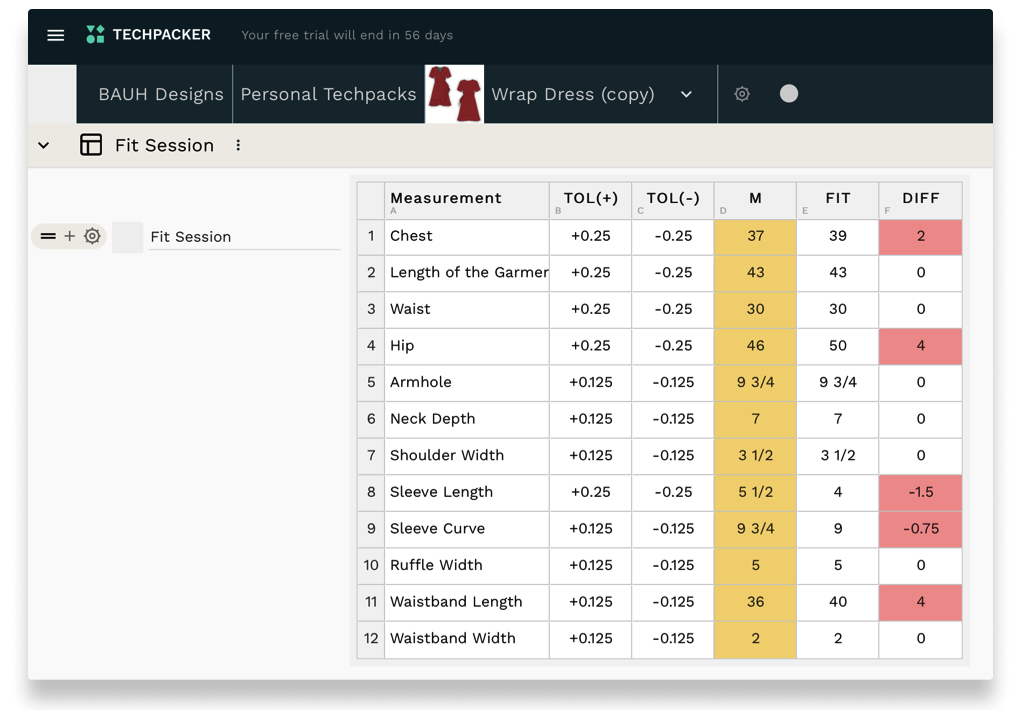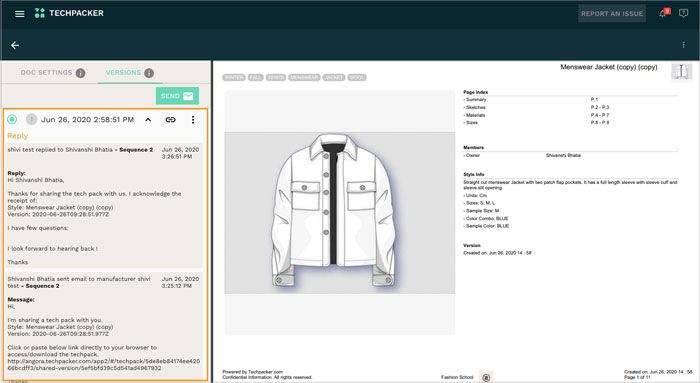Contents
A garment fit refers to how closely the measurements on the garment correspond to those of the three-dimensional human body and contours. A good garment fit is an extremely important aspect of any garment because it destroys the expectation of the wearer's good-looking appearance, comfort, and aesthetic aspects if the garment does not fit well in the desired look. In a nutshell, it completely eliminates the overall feel-good factor!
Furthermore, fit issues are the most common reason for online clothing returns. So, let's take a look at what goes into making a well-fitted garment.
What is garment fitting?
If you are a brand's technical designer or work in a role where you are responsible for sample development, you may also be responsible for garment fitting and fit sign off.
Fitting is the process of comparing and evaluating the sample that the factory created on your request with the measurement specs that you provided to them when developing your sample. When you fit the received sample on a dress-form, mannequin, or fit model, you are checking and confirming whether or not all of the specifications mentioned in the spec sheet have been met, with the design intent and design details on the tech pack serving as the benchmark.
Factors that contribute to a good fit:
- A spec sheet with a clear indication of the point of measurement;
- Design married to the right fabric for the desired look and fall;
- Patterns developed with precision;
- The garment is sewn with skill and finesse.
6 steps of the garment fit process
The fit process is carried out in six steps before the garment is finally sealed to achieve a well-fitted garment.

Standardize & sign off fit blocks
Fit blocks are the foundation pattern for any stylized garment pattern. They have all of the critical measurements for a perfect fit. They are unchanging patterns that are developed based on already standardized types of style, fabric qualities, fit or shape, and length that a brand adheres to.

In the spec sheet of your tech pack, you can enter the measurement of the fit blocks. Simply add the specs for the newly added style lines to the base pattern for a style, and with the help of the standardized fit block specs, you can make the style specs much faster and with greater accuracy in measurements. Fit blocks also help the factory speed up sampling because they already have the core blocks ready. Before sampling, your factory must develop the fit blocks, have them signed off by you or your fit technician, and keep them ready. This also implies that you must provide the factory with the specifications for all of the fit blocks well in advance of your sampling schedule.
It is critical to consider production feasibility when developing the fit blocks. Fit blocks can be reused season after season, speeding up and streamlining the fit sampling process. You can standardize the specs and develop the fit blocks on your own as a technical designer or fit technician, and then share a copy of the pattern for a faster turnaround of the fit sample. Ensure that all of the fit blocks have been labeled or assigned a unique pattern code, so that you can specify the fit block number in the tech pack and the factory will be able to retrieve the specs automatically.
Receive fit sample
Receiving a sample entails adding the sample in a tech pack and recording all relevant details. Typically, a factory will submit a sample with an attached comment tag containing related style details such as -season, sample type (fit/proto/pp etc.), base sample size (S/M/ L/ XL), style number, category (Mens/ Womens/ Kids), style name or description (eg: women's printed maxi dress), color combo, fabric type (original/alternate), fabric composition, fit name, wash name & details (washed/unwashed).
You must refer to the tech pack that you shared with the factory and ensure that the details on the submitted sample match and are correct; this is to ensure that you received the correct sample for the submitted tech pack. Then, record the details from the attached comment tag in your sample tracker and enter the received fit sample. If the factory did not submit the sample with the comment tag, you should advise them to follow best industry practices and re-send the sample with the comment tag and all the details.
Review fit sample
Reviewing a fit sample entails comparing the received sample's measurements to the shared spec sheet, looking for construction and pattern issues that may have a significant impact on the fit, and recording your review comments. To review a fit sample, you must inspect the tech pack, spec sheet, and reference garment all at once. This is to ensure that you are measuring the sample in accordance with the desired style details and to double-check that no important point of measurement was overlooked in the spec sheet.

Place the sample flat on a large table, grab a measuring tape, and record all of the sample's measurements in a new column in your tech pack. You can now compare all of the values for each point of measurement, calculate the differences, and record them in your spec sheet.

Read our detailed guide on including a Fit Sheet in your tech pack.
While reviewing, keep an eye out for the tolerance value. Is it because of tolerance or not? Examine the samples carefully for fabric details such as an incorrect grain line, an incorrect choice of alternate fabric, or any construction issues such as thread tension, seam finish, panel attachment sequence, fusing requirement, lining attachment, and so on. In some cases, you may need to request that the factory pull out the patterns and send them to you for verification.
Your spec may be the same on the fit sample, but the pattern shapes may be completely different, or there may be a dart or a style line that has been overlooked, all of which contribute to serious fit issues. While reviewing, think about whether you want to change the spec measurement for a better look or functionality. After you have completed the sample review process, you must enter all of your comments into the sample tracker.
Conduct fit trial
A fit trial is a preliminary fitting session in which the garment is tried on a dress-form or mannequin. Fit trials are one of the most effective ways to review the fit and all other style aspects of the sample while seeing how it will look when someone wears it. Take the appropriate form size and place the sample on it for testing. Analyze and discover the underlying issues and reasons for them. When performing a fit trial, look for fit-related issues as well as construction, pattern, specs, and design changes that should be incorporated to make the style look better or more functional.
Remember to keep track of all your comments. You can add them to the tech pack. Simply add comments to a sketch card. You can also assign comments to specific team members:

Learn how consulting firm ARD is using tech pack comments to document fit changes.
Conduct fit session
When done on a fit model, a fit session allows you to evaluate the garment sample in a tangible manner. You will need to trial the sample on a dress form or a fit model. When you place the sample, make sure to include what you intend to coordinate the style with. This will provide a comprehensive view of fit. For example, if you are fitting a jacket, make sure to include an inner wear to help analyze the wearability factor. If you are testing the sample on a form, make sure to run it through your hands and legs as well.
Everyone who needs to sign off as a team should now be in the room (in person or online). As a technical designer, you will first walk the team through the received fit sample, the tech pack, and any reference samples (if any), the specs, and the pattern, sharing your observations on the fit and other related issues that you documented while reviewing. If this is the style's second or third fit session, comments from previous samples will be taken into account. You must share your solutions to the problems. It's now time to hear everyone's thoughts on the samples. Some important questions to consider are:
- Is the overall fit satisfactory?
- Is it true to the design intent?
- Is there anything we need to change about the specs, pattern, or construction?
- Is it necessary to make any design changes?
- Is there any design detail that the designer would like to include that was not included in the tech pack?
You will also need to request that the fit model sit, stand, and walk/lift hand and legs to check the overall fit, ease of body movement, and look and fall of the garment. Inquire with the fit model about comfort, garment ease, back rise, fabric feel, and other factors. Take notes on everything that the team discussed, argued about, and decided on.

Learn how to hold effective online fit sessions.
Share review comments & feedback
Finally, as a technical designer or product developer, you will go over the changes and record your thoughts as comments and sign-off. The sketches must be updated in accordance with the new specifications in the tech pack. If there are any design changes, they must also be reflected in the sketch. The spec sheet must reflect all measurement changes.

You can now send the revised tech pack, revised specs, and review comments to the factory and request the final fit sample to seal the fit. On Techpacker, you can view the complete correspondence in one place.




